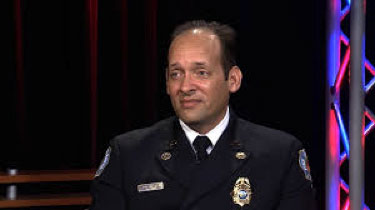
Otto Drozd
Fire Chief, Orange County (Florida) Fire Rescue
Chief Otto Drozd led the fire service in Hialeah, Florida, and El Paso, Texas, before returning to his home state of Florida as chief of the Orange County Fire Rescue. Community Fire Protection News interviewed the veteran firefighter to discuss his experiences in fighting fires, training as an EMS worker, and dealing with different types of populations and construction.
Community Fire Protection News: Welcome back to Florida, Chief Drozd. What’s the biggest adjustment when changing cities?
Otto Drozd: Perhaps the biggest adjustment is that Hialeah is a city of about 230,000 people and 20 square miles compared with Orange County, which has more than 1 million people spread over 1,000 square miles. In a large, diverse city of both urban and rural areas, preparation is key. Not that it’s ever easy in a city, but in a rural area you can’t count on quick backup. We need to be ready for everything. One of the other differences is the large number of wood frame structures in Texas as opposed to Florida, which has more aggressive building codes.
CFPN: Speaking of building codes, how does the fire service work with building departments?
Drozd: It’s an important relationship. We’re obviously interested in safety, but building codes are often directed at economic development goals. That’s not to say building officials aren't interested in safety. But we have to work together and reconcile any differences for the good of the community. You overcome any obstacles and foster development in the safest way possible. Fire and building departments both understand that.
CFPN: Regarding buildings and construction, what changes have you seen?
Drozd: Many. They call it “mass versus math.” Standard construction holds longer and burns slower. It’s safer from a firefighting perspective. Today’s construction uses lightweight materials, smaller components, and a truss system. The buildings are structurally sound, but the fires spread easily, move faster, are more intense, and have made firefighting more difficult. I was just reading that some construction now uses plastic I-beams! So unless you know otherwise, you have to fight every structure fire assuming it’s lightweight construction.
CFPN: You’ve had extensive experience in both firefighting and EMS. How have those experiences shaped you?
Drozd: I started out in firefighting, but I made lieutenant when paramedic training was also required. On my first day, I had 19 calls in 24 hours. I thought, “Wow, it can’t be like this every day.” And it wasn’t. On my second day, I had 23 calls! But the experience definitely made me a better chief. You get the full picture of today’s fire service.
CFPN: ISO Community Hazard Mitigation introduced an updated Fire Suppression Rating Schedule (FSRS) and found that one of the areas that’s changed most — and for the better — is technology. How important is that to you?
Drozd: Extremely. First of all, we’re very conscious of incorporating ISO and other accreditations into our strategic planning. We benchmark performance, set baselines and goals, and drive those standards home to every firefighter and staff member. We’re now using technology with real-time data to measure performance on response times and other criteria. We’re also using some FEMA grant money for a training command simulator. Repetition is essential, and with fewer fires, it’s become more difficult to provide real-life experience. The simulator lets us train in a virtual environment, present various scenarios, perform a 360 review — just about everything we do in the field.
CFPN: What’s been your proudest moment?
Drozd: Well, there actually isn’t one specific moment. When I think back to when I was in training right through to now, it always comes back to the people. In the fire service or EMS, we get excited over new trucks or equipment. But that new truck will never be as good as it was on its first day of service. Only the people get better over time. People gain experience, knowledge, and leadership abilities.
CFPN: What lies ahead for your department? What are the goals?
Drozd: More technology. And becoming a model department. But in a way, it’s like running up a down escalator. You keep moving, keep improving, but you never fully attain your goal because as you move forward you should always be moving the goal forward as well. We’re always raising our goals.
